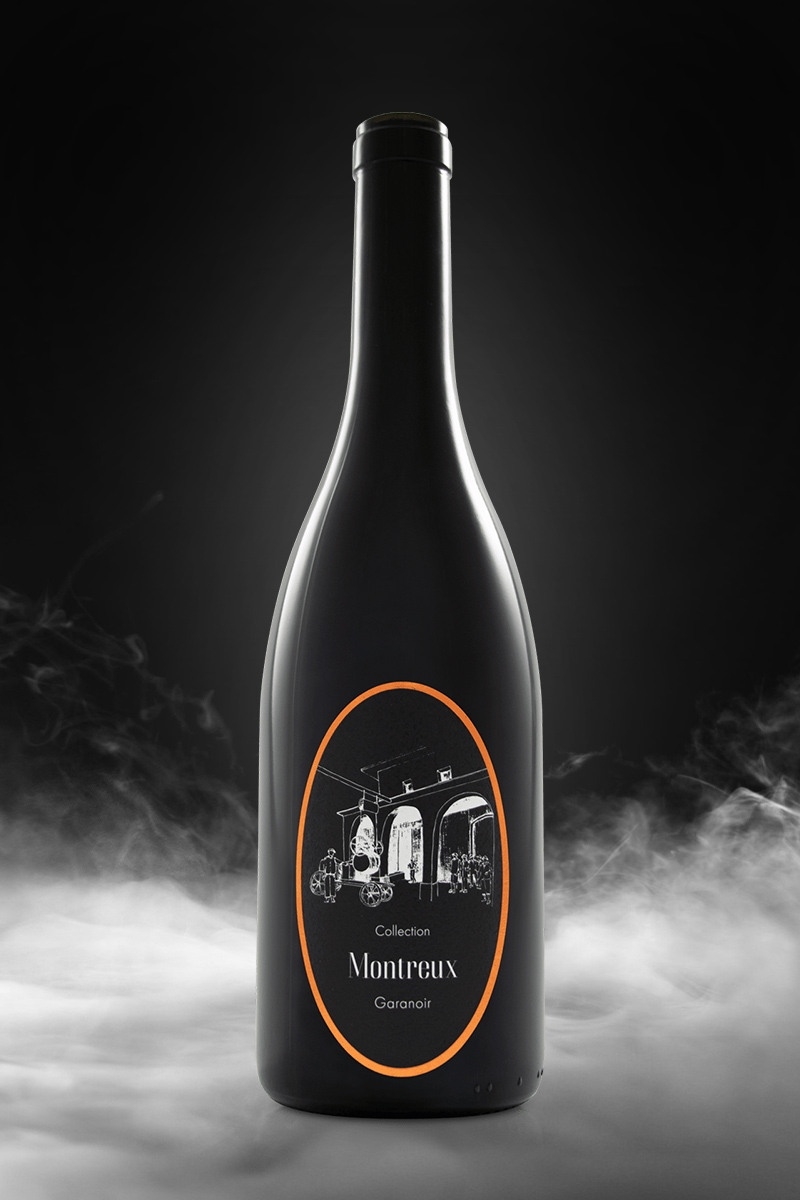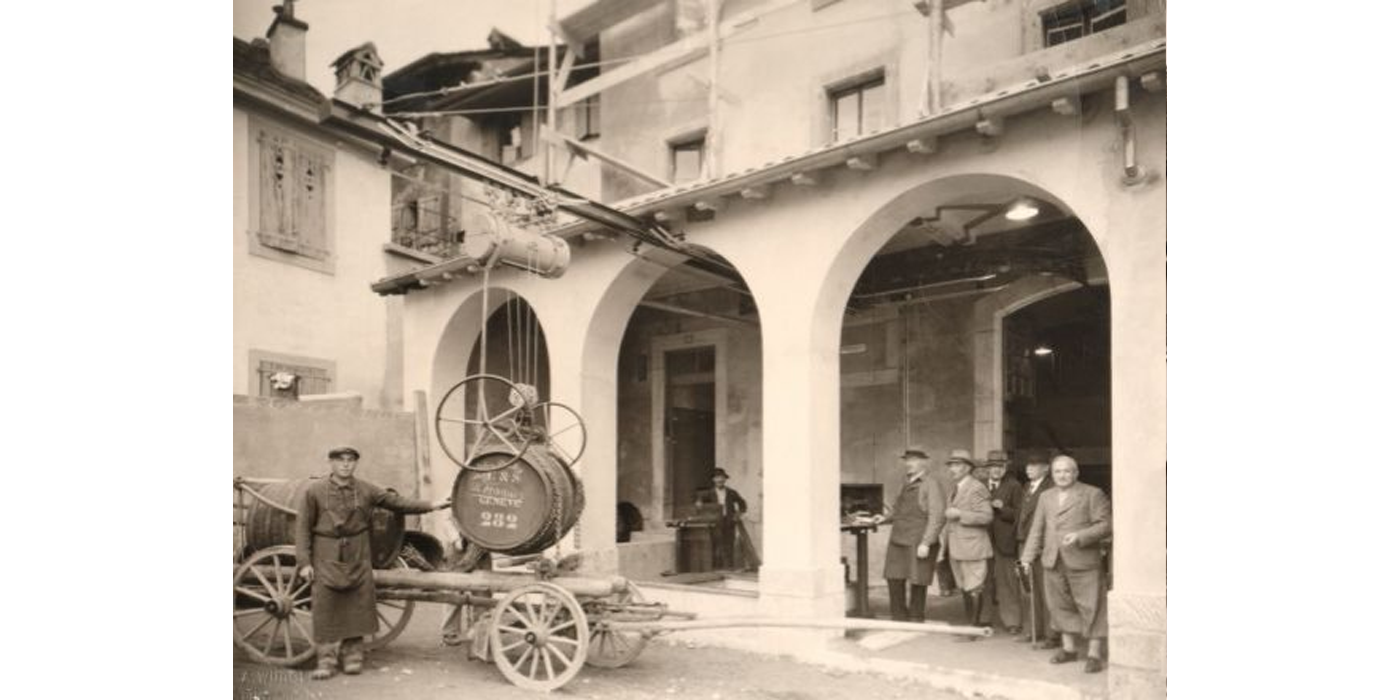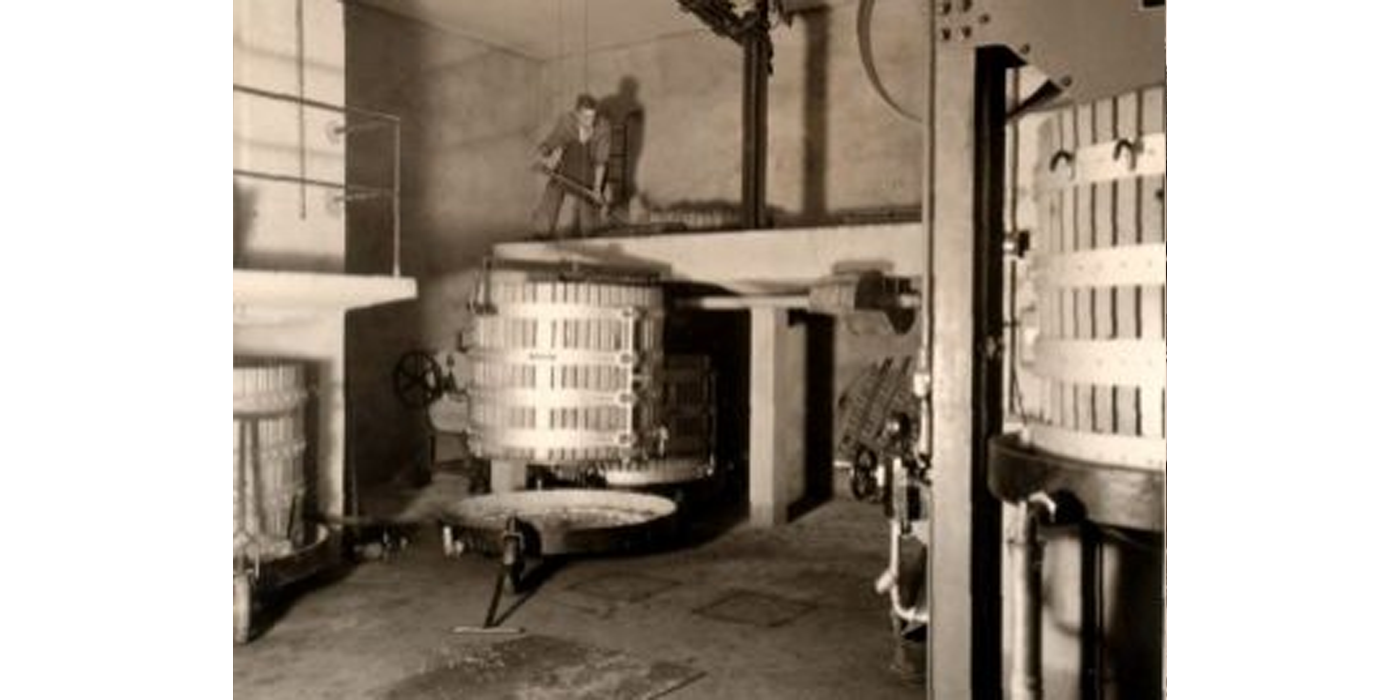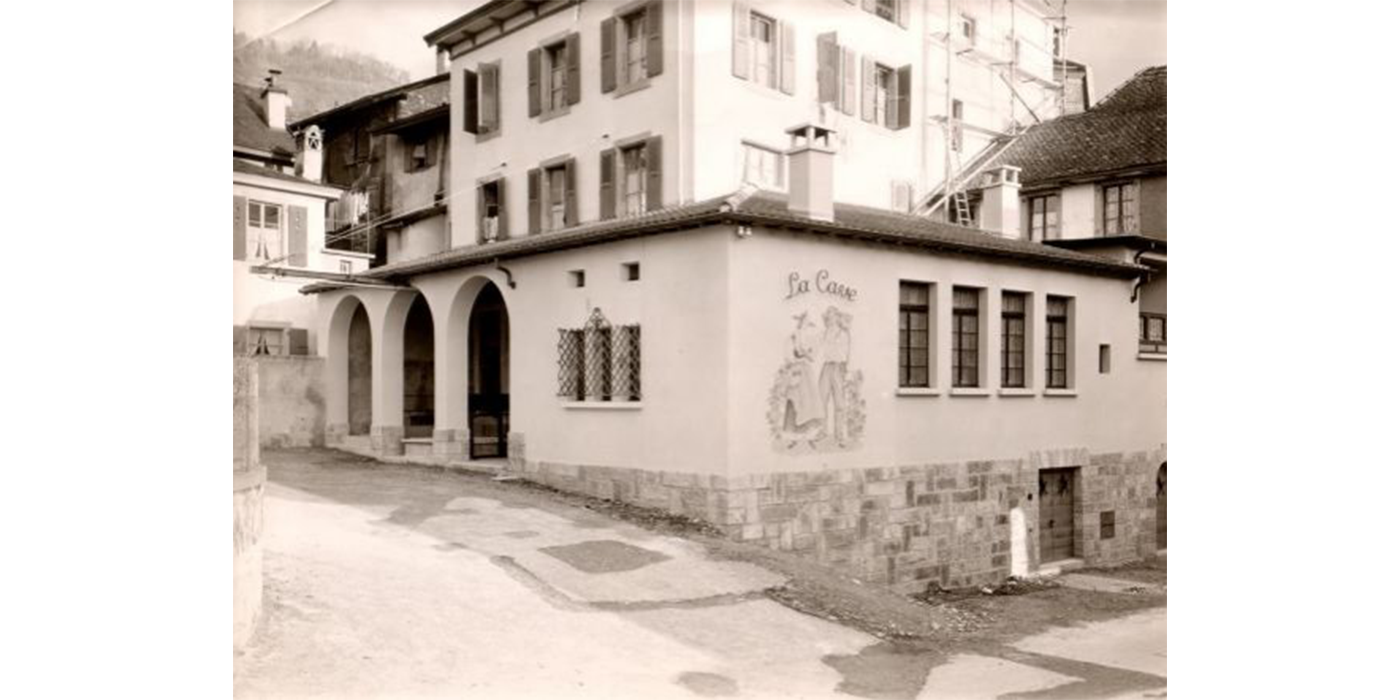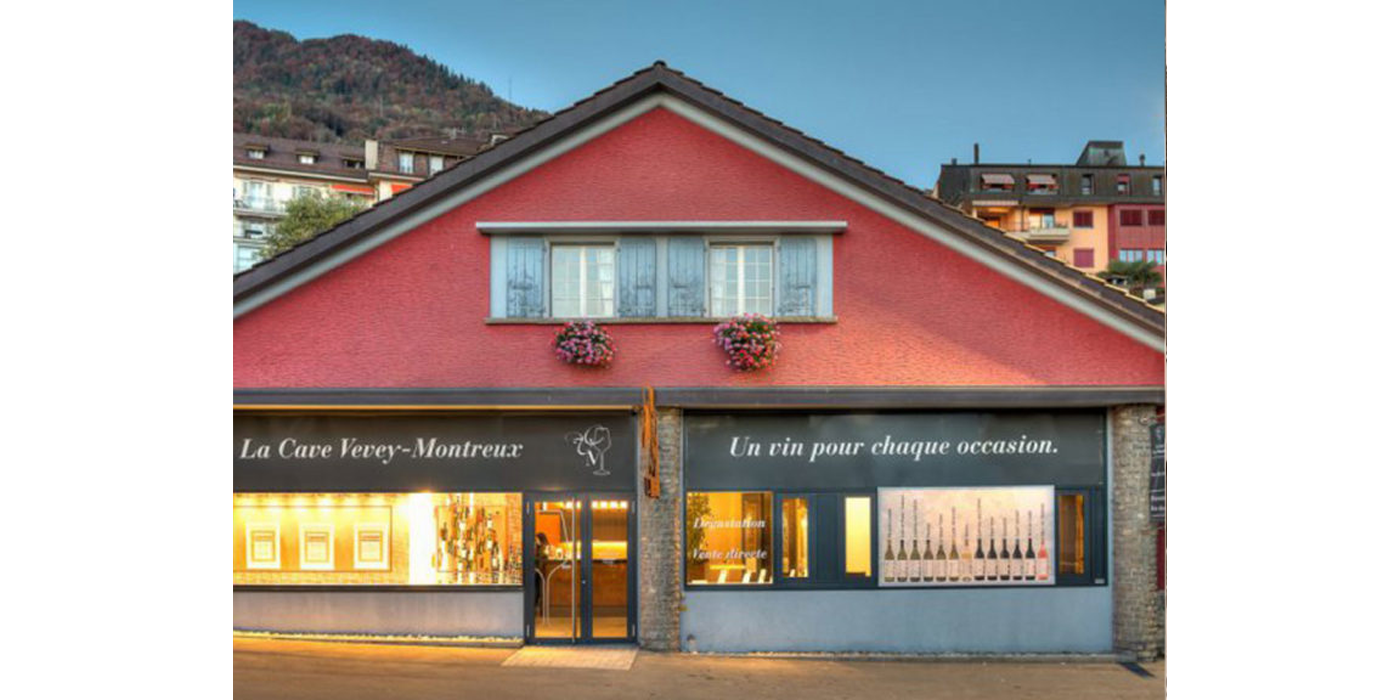Our wines
The grape variety consists of :
Chasselas de Montreux, a fruity white wine, typical of the terroir, ideal for aperitifs and to accompany starters and fish.
Gamay de Montreux, a very fruity red, which goes wonderfully with white meats and can also be drunk as an aperitif.
L’Assemblage, a red wine vinified in barrels, consisting of a tasty blend of Merlot, Cabernet Franc, Garanoir and Diolinoir. Well-structured, with a rather strong tannic structure, it goes well with red meats, cheeses and spicy dishes.
Our heritage
Château des crêtes
Situated on a terrace overlooking the banks of the Clarens and Basset rivers, the Château des Crêtes (1865) is a major monument to the Montreux of yesteryear. This neo-renaissance building bears witness to the open-mindedness and mobility of the Montreux inhabitants of the time. The complex is classified as a Historic Monument.
The castle, consisting of 36 rooms and a tower with a spiral staircase, is visible above all from the lake.
It is surrounded by a wine estate of the same name, La Cave Vevey-Montreux, whose grape varieties include Chasselas, Gamay, Pinot Noir, Garanoir and Cabernet Franc.
- Commune
- Montreux
- Inauguration
- 1864
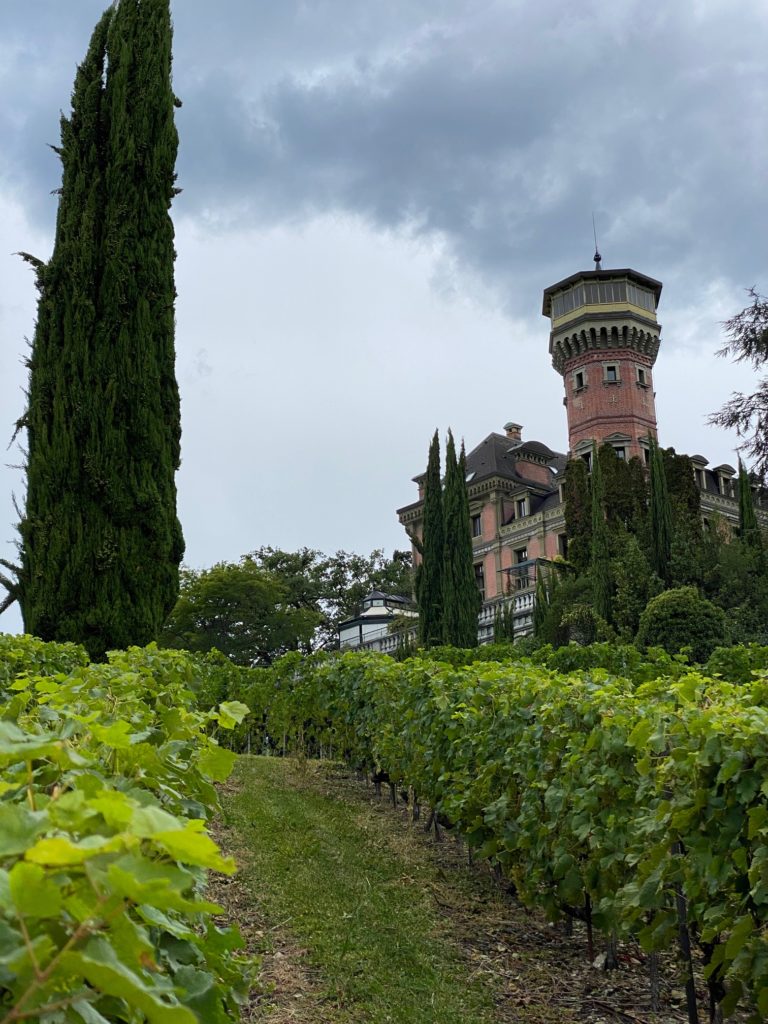
Clos de plan Chailly
In the 17th century, the wine-growing activity of this vineyard was linked to the convent whose building still stands. The viticulture department validated the “Clos” appellation in 2010. This plot is crossed by the “sentier du clos” (vineyard path) which attests to the wine-growing imprint of this locality. A “clos” is defined by the harvest of a single plot with a homogeneous terroir and exposure, distinguished from other estates by a clear demarcation.
Saint-Vincent Temple
The church was built at the end of the 15th century, probably on the ruins of an 11th century monastery. Dedicated to Saint Vincent, patron saint of winegrowers.
Our Saint-Vincent cuvée, a magnificent Gamay, is produced here.
Commune of Montreux
The terroir of the Montreux vineyard is of the “alpine moraine” type. These soils contain a large proportion of gravel that the Rhône glacier left behind when it retreated 15,000 years ago. The composition of this soil varies according to the topographical location.
Depending on the vintage, the wines made from this soil can be bottled in spring. They are distinguished by their fruity side and a rather restrained acidity.
The Commune owns a little over 17,000 m2 of vines located at the foot of the Château du Châtelard, in the area known as “Es Ruffinel”. Another, smaller plot of land located in Chailly, between the village and the Chemin de la Poneyre, at the place called “En Rouvelaunaz” is also owned by the Commune.
Commune of La Tour de Peilz
A large part of the wine-growing terroirs of this commune is called “red marl”. These soils are characterised by a red or wine-lees colour. This rock is about 25 million years old. Tender and close to the surface of the soil, it is cracked and colonised by the roots over a great depth. In the summer period, when the water reserves run out, the vine finds in this rock the water necessary for the perfect ripening of the grapes.
Commune de Blonay
A large part of the soils in the commune of Blonay are of the “colluviosols” type. They were formed at the foot of the slopes during their slow erosion. They have different proportions of sand, gravel and pebbles. These deep, filtering layers produce particularly fine, mineral wines.

